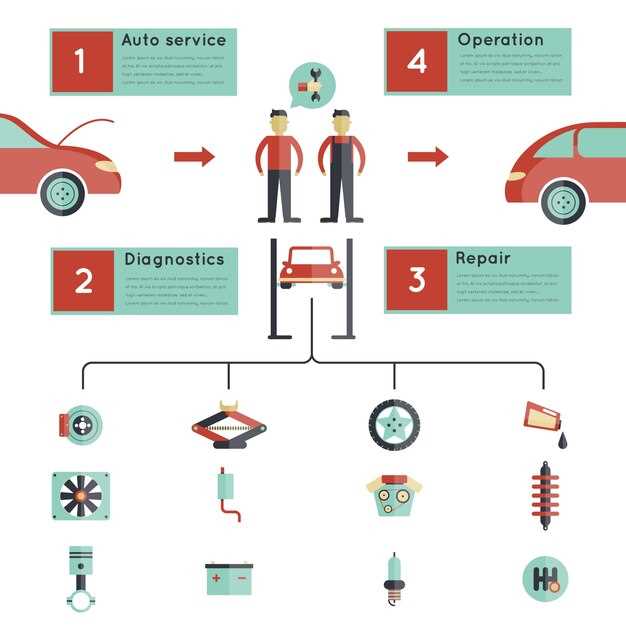
How to Create a Car Maintenance Schedule
- Arthur Rodriquez
- 0
- Posted on

Creating a well-structured maintenance schedule for your vehicle is essential for ensuring its longevity and optimal performance. A good schedule helps car owners keep track of routine tasks and prevent potential issues that could lead to costly repairs. By understanding the importance of a systematic approach to vehicle care, you can prioritize the maintenance tasks that matter most.
A comprehensive car maintenance schedule should encompass various key aspects, including regular oil changes, tire rotations, and brake inspections. These fundamental tasks not only enhance the efficiency of your vehicle but also contribute to overall safety. It’s crucial to tailor your schedule to your specific vehicle model and driving habits, taking into account factors such as mileage and environmental conditions.
In this article, we will outline the steps to develop an effective car maintenance schedule that fits your lifestyle. Whether you are a seasoned car enthusiast or a new vehicle owner, our guidelines will help you stay organized and proactive in maintaining your car’s health. Adopting a planned approach to car care can save you time, money, and stress in the long run.
Identifying Key Maintenance Tasks for Different Vehicle Types

Creating an effective maintenance schedule requires understanding the specific needs of different vehicle types. Each category of vehicles–whether it’s cars, trucks, or motorcycles–has unique maintenance tasks that should be prioritized to ensure reliable operation and longevity.
Passenger Cars: For standard passenger vehicles, key maintenance tasks include regular oil changes, air filter replacements, and brake inspections. It’s also essential to monitor tire health, including rotation and pressure checks. Following the manufacturer’s service schedule can prevent common issues and enhance performance.
SUVs and Light Trucks: Given their heavier weight and increased usage, SUVs and light trucks require more frequent inspections of the suspension and drivetrain components. Additionally, fluid levels for four-wheel-drive systems should be checked regularly. Brake maintenance is also critical, especially if the vehicle is often loaded or towed.
Heavy-Duty Trucks: For heavy-duty vehicles, maintenance schedules should emphasize engine performance monitoring, comprehensive brake inspections, and regular transmission servicing. Tire wear can be more pronounced due to weight, so maintaining proper inflation and alignment is crucial. Moreover, checking the exhaust and emission systems helps comply with regulations and ensure efficiency.
Motorcycles: Motorcycle maintenance focuses on the engine oil, chain lubrication, and tire pressure. Regular checks on brakes, lights, and fluid levels are vital for safety. A maintenance schedule for motorcycles should include seasonal preparations to address weather-related issues, such as corrosion prevention.
By identifying key maintenance tasks tailored to each vehicle type, owners can develop a suitable schedule that promotes safety, efficiency, and performance. This proactive approach to maintenance will lead to reduced costs and enhanced vehicle lifespan.
Setting Up a Calendar: Frequency and Timing of Each Task
Creating an effective car maintenance schedule requires careful planning of tasks based on frequency and timing. By organizing your maintenance activities in a calendar format, you can ensure that your car remains in optimal condition and prevent costly repairs down the line.
Below are suggested maintenance tasks along with their recommended frequencies:
-
Oil Change:
- Frequency: Every 5,000 to 7,500 miles or every six months, whichever comes first.
-
Tire Rotation:
- Frequency: Every 6,000 to 8,000 miles.
-
Brake Inspection:
- Frequency: Every 10,000 miles, or as needed based on performance.
-
Fluid Checks:
- Frequency: Every month, including engine oil, brake fluid, coolant, and transmission fluid.
-
Air Filter Replacement:
- Frequency: Every 15,000 to 30,000 miles.
-
Battery Maintenance:
- Frequency: Inspect every 6 months; replace every 3-5 years.
-
Wiper Blade Replacement:
- Frequency: Every 6 to 12 months.
To optimize your maintenance calendar:
- Use a digital calendar or app to set reminders for each task.
- Consider seasonal changes that might affect maintenance needs, such as checking coolant levels before winter.
- Keep records of completed tasks for reference and to track trends.
Regular maintenance checks will prolong the life of your car and enhance its performance. By adhering to this structured calendar, you can minimize the risk of unexpected breakdowns and ensure a smooth driving experience.
Utilizing Technology for Reminders and Tracking Maintenance History

In today’s fast-paced world, managing your car’s maintenance schedule can be made significantly easier with the use of technology. Mobile apps and online platforms provide robust tools for setting reminders and keeping a detailed maintenance history. This approach not only simplifies your life but also helps ensure that your car remains in optimal condition.
One of the primary benefits of using technology is the ability to set automatic reminders for essential maintenance tasks such as oil changes, tire rotations, and brake inspections. Many car maintenance apps allow users to input their vehicle’s make, model, and service history, enabling personalized reminders based on specific mileage or time intervals. This ensures that you never miss a crucial maintenance date, which could lead to costly repairs down the line.
Additionally, digital tools can help track maintenance history in an organized manner. By logging each service performed, including dates, costs, and maintenance details, you create a comprehensive record that can be invaluable when selling the vehicle or for warranty claims. This digital history not only aids you in keeping track of past services but also helps to identify patterns that may indicate underlying issues.
Furthermore, some applications offer features like notifications for recalls or service bulletins, ensuring your car remains compliant with safety regulations and operates at peak performance. These tools enhance your proactive maintenance approach, potentially increasing the vehicle’s longevity and reliability.
In conclusion, incorporating technology into your car maintenance routine can significantly streamline the process of reminders and tracking. By leveraging apps and digital tools, you can maintain better oversight of your vehicle’s health, leading to more informed decisions and enhanced performance.